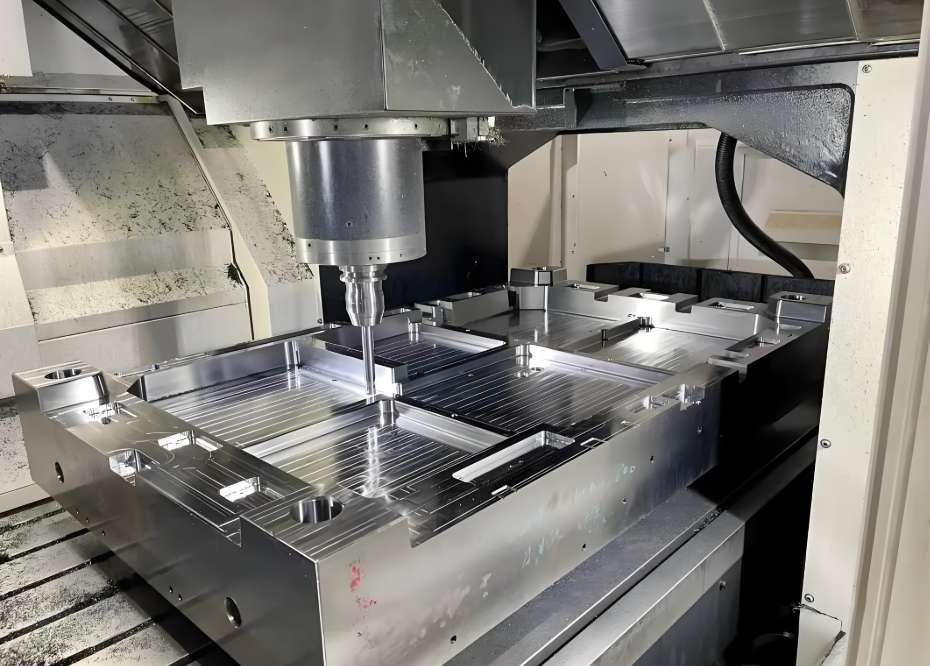
On the worktable, a 1.2-meter-long cavity part is steadily moving along its preset trajectory. Each step the spindle takes downward exudes a sense of stability—fine chips flow along with the coolant, leaving neat milling marks on the part’s surface like the lines on a ruler. This is not a simple mechanical operation, but rather our most straightforward interpretation of the word "precision" as a CNC precision component machining company.
Large Cavity Parts: The Fine Craftsmanship Hidden in "Size"
In the core field of industrial manufacturing, large cavity parts have always been a symbol of a "technical barrier." These parts often bear the core structures of aviation engines and high-end equipment. Their complex slots, mutually perpendicular through-holes, and stringent flatness requirements act like a "ruler," measuring a machining company’s ability to control details. For example, the aluminum alloy cavity in front of us must keep its slot depth error within 0.01 millimeter, and the coaxiality of each positioning hole must be as precise as a clockwork gear— even the slightest deviation could affect the stability of the entire device.
Our engineers often say, "The machining of large cavity parts is not a test of the size of the equipment, but a test of 'reverence for detail.'" For this part, we began our "preparation battle" a week in advance: First, we used 3D modeling software to simulate the milling cutter’s path, adjusting the tool path repeatedly to ensure that each cut avoids the part’s weak points. Then, based on the material properties of the aluminum alloy, we selected the parameters for the tungsten steel milling cutter—the spindle speed must not be too fast, or the part will heat up and deform; the feed rate must not be too slow, or it will affect machining efficiency. The most critical part is the fixture design—we made a custom base from high-strength alloy steel, securing the part firmly with four locating pins and eight clamps, ensuring no vibration even during heavy cutting. The moment the milling cutter starts to rotate, the operator closely monitors the load curve on the screen, with fingers ready on the adjustment buttons to respond to any minor changes— the uniformity of each milling mark and the depth of each spindle step do not escape their eyes.
Precision Machining: No "Shortcuts," Only "Persistence"
In our workshop, there is no such thing as "good enough." Every part must go through three inspections: a pre-machining check of the blank to ensure there are no material flaws; in-process measurement using a probe to detect dimensions in real-time; and post-machining three-coordinate inspection to record every piece of data. Even if a milling mark on the part’s surface is not neat enough, we will readjust the parameters and re-machine it. We know that precision machining is not about "one-time success," but a long-term practice—only by treating every part and every process seriously every day can we earn the trust of our customers to handle their core components.
For example, last month we machined a stainless steel cavity part with a 15-degree bevel. This required high precision in the milling cutter’s path planning. Our programming engineers spent two days adjusting the tool path, using a spiral milling method to slowly cut in and ensure the bevel surface was smooth and free of tool marks. When the part was finished, the operator touched the bevel surface and said with a smile, "This feels like a polished mirror." Such attention to detail is not achieved by the equipment "automatically," but by our familiarity with the process and our dedication to detail.
Conclusion: Crafting the Story of Every Part with "Dedication"
In the world of CNC precision machining, there is no "magic technology," only "consistent dedication." We do not pursue "the fastest," but "the most stable"; we do not pursue "the most," but "the best." We know that every part carries the trust of our customers, and every process affects the quality of the product.
If you have large cavity parts that require precision machining, or if you want to know how we handle the details of complex structures, please visit our website www.simituo.com. There, you can see more of our case studies—from aviation parts to medical equipment, from aluminum alloy to stainless steel, every part bears our "dedication." We believe that good machining services are not just talked about, but made—just like the machines turning in the workshop, each rotation is writing the story of "precision."